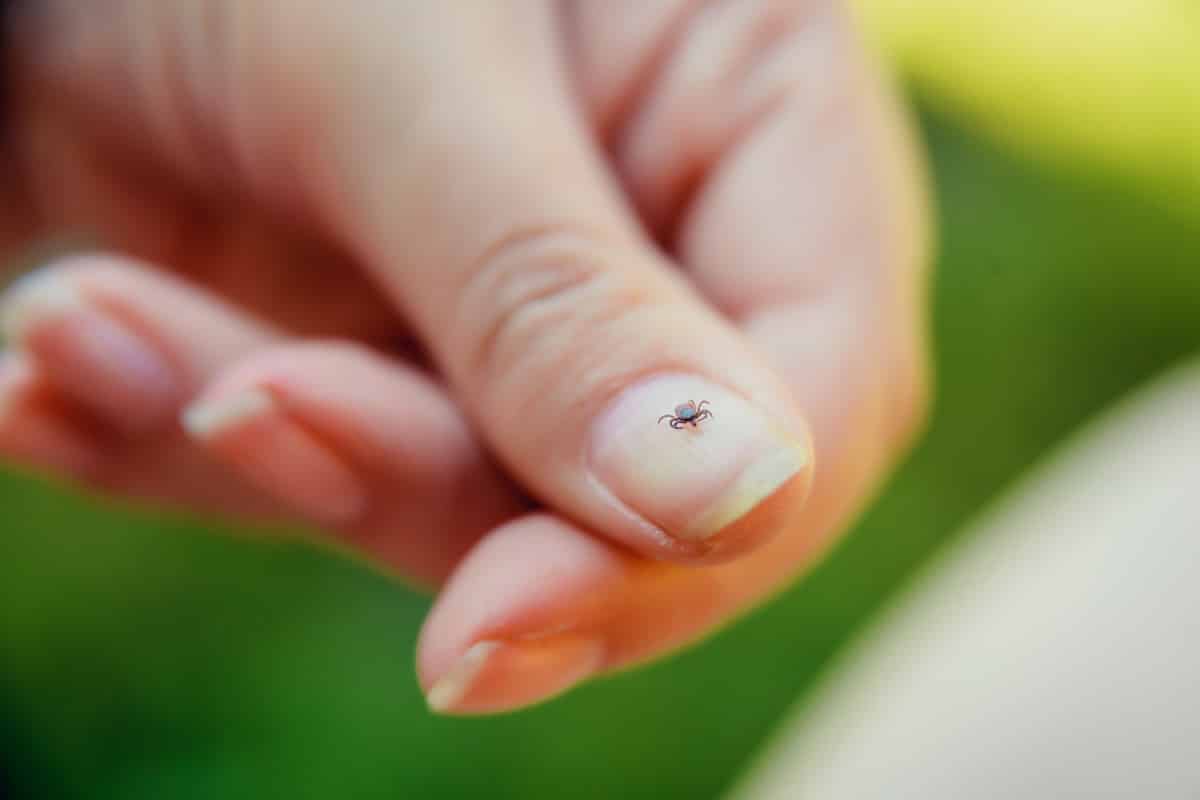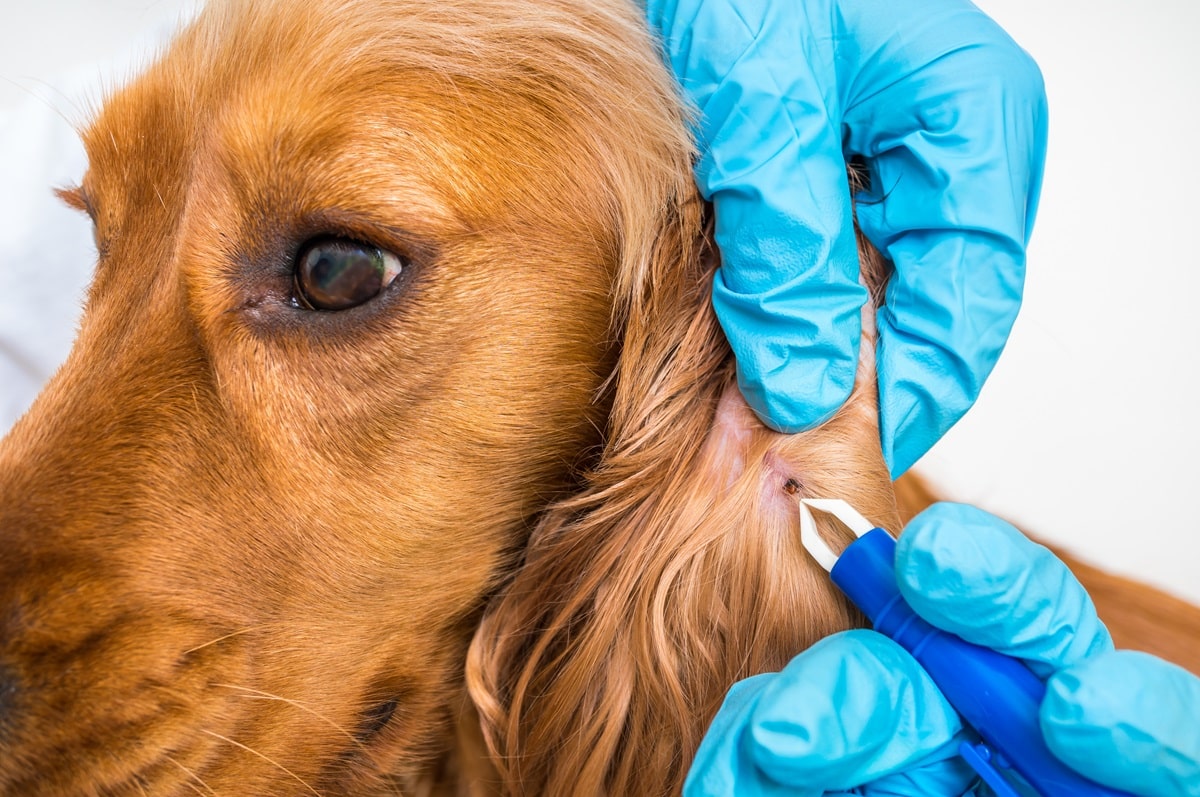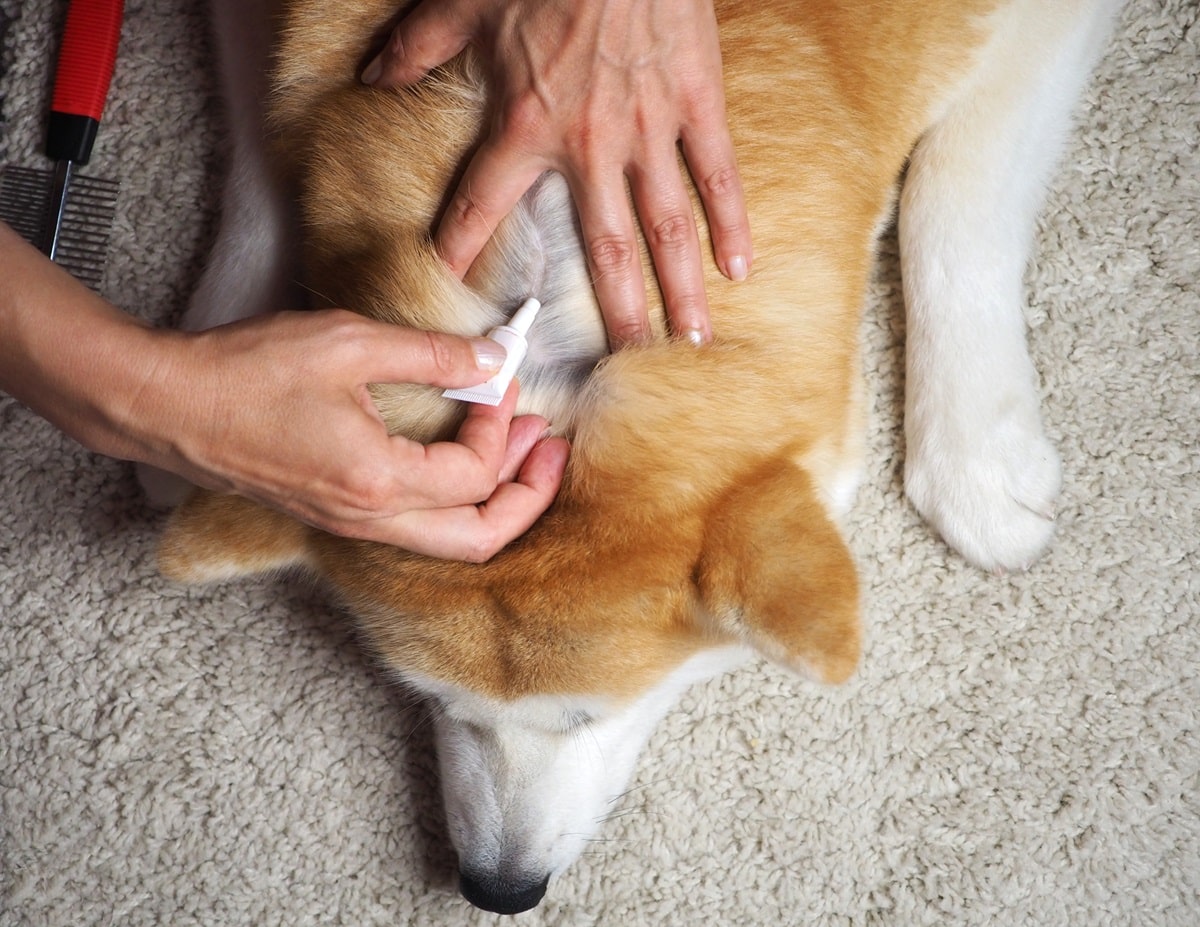
Woman checking dog's skin for ticks on blurred background, closeup
Poorly removed tick: how to react?
Table of Contents
- 1 Poorly removed tick: how to react?
- 1.1 How does the tick attach itself to its host?
- 1.2 Indeed, whether you have taken a long walk or a simple outing in the garden, your pet may have potentially been bitten, especially during the risky seasons.
- 1.3 How to remove a tick properly?
- 1.4 What to do once the tick has been removed?
- 1.5 What not to do

Whether you are lucky enough to have a dog or a cat, you take care of your pet with love and attention. Activities, food, health…
And among them, the tick is quite formidable.
A potential vector of disease, the tick is a mite of the arthropod group, like chiggers. Particularly present in autumn and spring, it is very difficult to dislodge once installed on the body of its host. This is why, sometimes, a part of his body can remain embedded in the skin.
What to do in this situation? What is the risk to your little companion’s health? What should be done and what not to do?
Follow the guide to learn how to react when a tick is improperly removed.
How does the tick attach itself to its host?

Unlike insects, mites do not have mandibles or antennae. The tick therefore has no head, but has a rostrum, which is itself equipped with chelicerae.
Its chelicerae allow it to cut the skin at the location selected by the tick after a few peregrinations on the animal’s body.
Because the tick is hematophagous, it then pushes its rostrum into it, little by little, and secretes a substance, called cementum, similar to glue. This explains why ticks are so difficult to remove.
Indeed, whether you have taken a long walk or a simple outing in the garden, your pet may have potentially been bitten, especially during the risky seasons.
It is therefore only by inspecting your pet’s skin that you can discover it. You have to lift the hair all over the body to carefully control each area.
The tick locates a potential host thanks to carbon dioxide sensors located at the end of its front legs. By clinging to the skin of its host, the tick injects an anesthetic salivary substance.
Without this inspection, it is therefore impossible for you to know if your dog or cat has a tick because its bite is painless.
How to remove a tick properly?

The method seems simple: just unscrew the tick. This rotation prevents the strut from being torn from the rest of its body and implanted in the skin.
Tick tweezers are the perfect instrument for this operation. If you don’t have one on hand, use your fingers or tweezers.
Contrary to popular belief, you should not try to put the tick to sleep by using ether or modified alcohol. Disturbed, the tick can then regurgitate into the body of its host, increasing the risk of infection.
What to do once the tick has been removed?

Disinfect well
Some ticks are not yet their adult size.
You can use a disinfectant, such as modified alcohol or biseptine for example. If you don’t have anything at your disposal, soap and water do just fine.
Watch
Rest assured. Even if the rostrum has detached from the rest of the body, the tick is dead and there is no longer a risk of disease transmission.
However, the parts that remain embedded in the skin sometimes cause infections.
In the days that follow, carefully monitor the affected area. If you see redness appearing, if it swells and/or if your pet is sensitive to it, make an appointment with the vet.
In the event of a proven infection, antibiotic treatment is prescribed.
If none of these symptoms occur, be patient. The body of your favorite animal will reject this foreign body that is no longer connected to something alive, and the rostrum will eventually detach itself.
What not to do
- Have you removed the tick incorrectly and its rostrum has remained attached to your furball? Do not insist or try to remove it with pliers. Not only do you risk injuring your dog or cat, but you can promote a superinfection of their skin.
- Be aware that Vaseline and nail polish remover are completely ineffective in detaching a tick or its rostrum. These 2 products will only damage your pet’s skin a little more.
- Forget about the idea of burning the tick with a match or lighter flame. It doesn’t work and it’s especially extremely dangerous for your 4-legged friend!
It is estimated that about 50% of ticks carry one or more pathogens. They are therefore not all vectors of disease, but removing them quickly limits the risk of infection.
By following these few tips, you will know how to react and take care of your doggie or cat.


